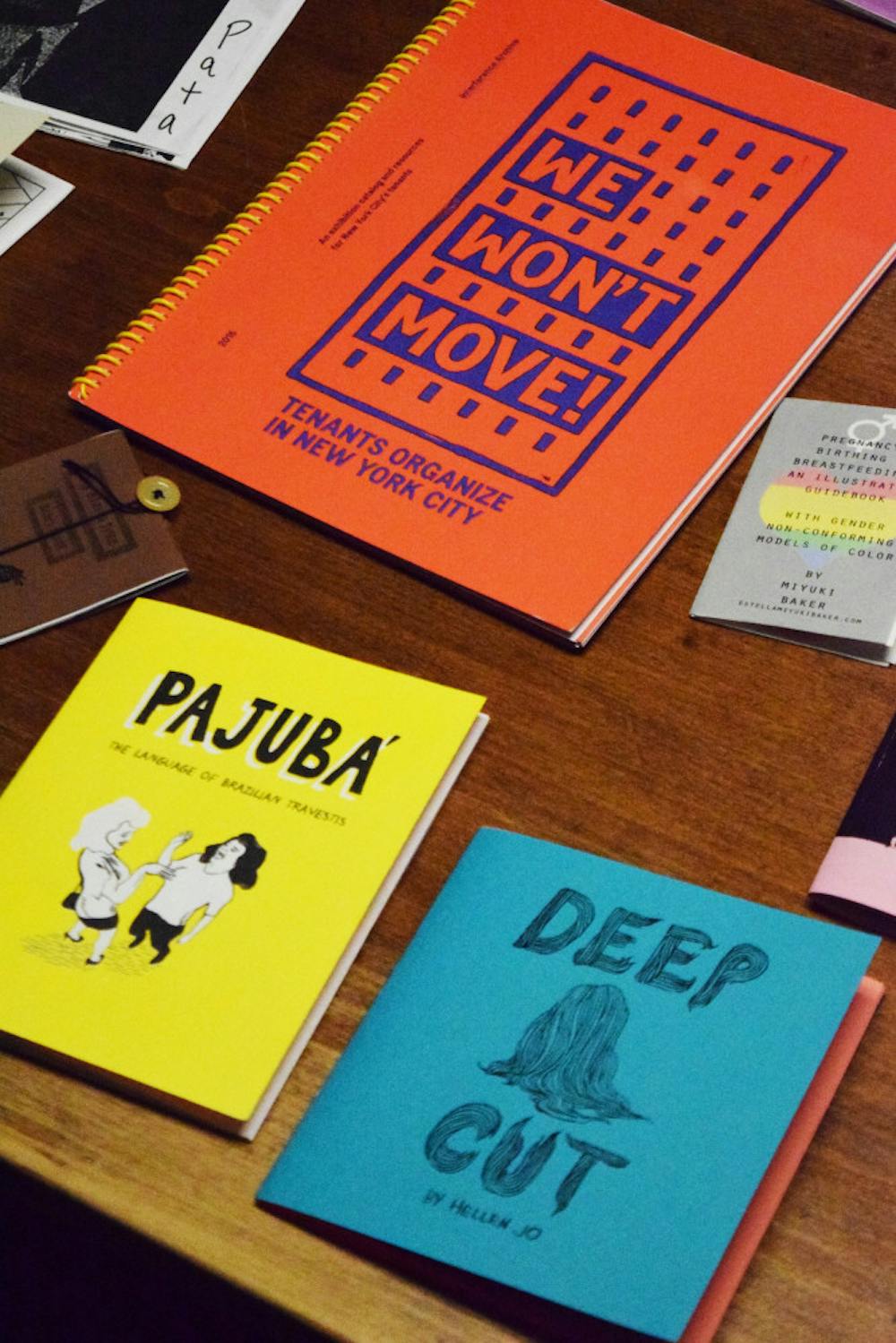On Feb. 1, Malana Krongelb ’18 unveiled a zine collection that she had spent over a year curating to members of the Brown community. The collection, which will be stored in the Sarah Doyle Women’s Center, features hundreds of zines covering topics ranging from gender identity exploration to do-it-yourself tutorials on vegan cosmetic recipes.
“A zine is an independently published work that’s made for passion rather than profit,” Krongelb said. The zines in her collection “take on many forms” from standard magazines to smaller publications featuring handmade artwork.
Students gathered over hot chocolate and cookies to examine the zines Krongelb had catalogued for the University. “They kind of seem like memes for books … something that our generation and maybe future generations can appreciate,” Alexander Skovron-Dow ’18 said.
Krongelb was first introduced to zines at Brown. Struggling with Post-Traumatic Stress Disorder after being sexually harassed by a graduate student during her freshman year, Krongelb said she found comfort in helping Bluestockings Magazine create a zine called “Silence In Voice” that contained the stories of sexual assault survivors. “It really helped me heal, and for the first time I had some sense of closure,” she added.
Krongelb also said that zines appealed to her because “people who don’t have access to large, corporate publishing houses can have their voices heard through zine making … that sense of agency can be really healing.”
Krongelb obtained over $3,000 in grants to build the collection on top of the zines which she received as donations from around the world, she said. “I’m a queer, disabled woman of color … In some ways that made it easier for me to put together a collection that represented marginalized voices that I wasn’t seeing in other University collections.”
The opening event for Krongelb’s zine collection was followed by two workshops sponsored by the LGBTQ Center that featured Jenna Freedman, associate director of communications and zine librarian at Barnard College. Freedman has maintained and catalogued Barnard College’s zine library for the past 13 years.
“This generation is so much wiser about mental health issues and taking good care of each other … So many zines are made by people college-age(d) so you really get to see your experience reflected back at you,” Freedman added.
Krongelb said that the SDWC was an appropriate home for Brown’s zine collection because it already has an “established library … and zines have a feminist history.”
Gail Cohee, director of the SDWC and associate dean of the College agreed with Krongelb and said the collection “covers all the areas of feminist inquiry … (the Center) is at least a good starting place for it.”
Cohee added that zines are a “different way of creatively doing literature and political work.”
Zines have made appearances in campus activism at Brown, most recently during the University’s campus walkout. Stickers distributed at the protest came from a zine compiled by students taking VISA 1240: “Art of the Book,” said Jake Kuhn ’17, a student in the course who helped distribute the stickers. Creating the zines and stickers were a way for “people who might not be organizers or consider themselves activists to express political sentiments or contribute to the movement.”
Lara Henderson, an adjunct lecturer in visual arts, said she encouraged her students to make zines in her course because she believed that “getting away from screen time and actually having conversations with people you don’t know but (with whom) you have this common interest” has considerable power.
Zines “have a big role in getting the message out there,” Kuhn added. “They’re at the intersection of art and politics … It’s really important for artists to think about how their art can contribute to conversations and start conversations.”
Looking ahead, Krongelb hopes to create an official student group dedicated to raising awareness about the collection and zine making in general, she said.





